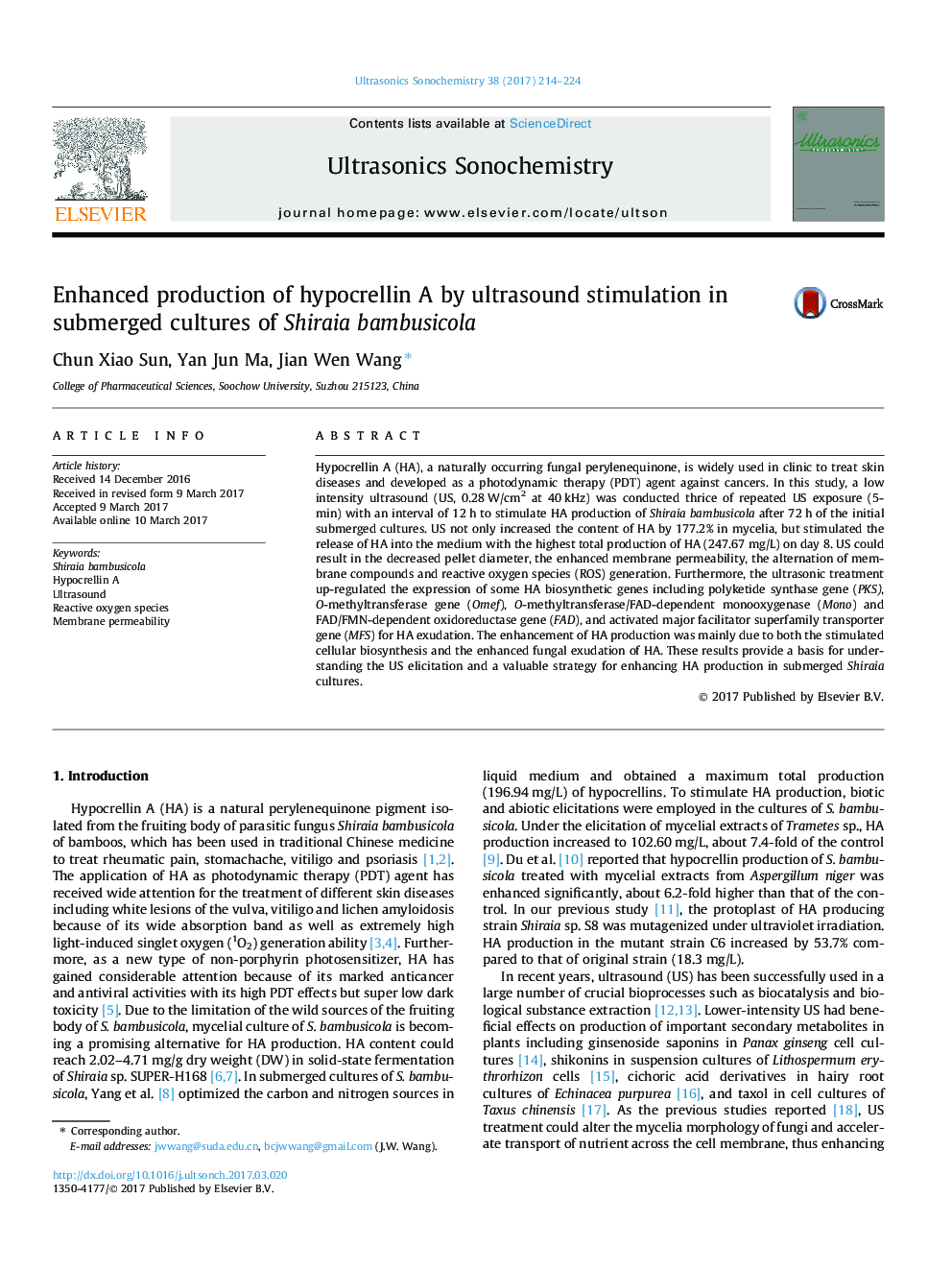| Article ID | Journal | Published Year | Pages | File Type |
|---|---|---|---|---|
| 5144649 | Ultrasonics Sonochemistry | 2017 | 11 Pages |
Abstract
Hypocrellin A (HA), a naturally occurring fungal perylenequinone, is widely used in clinic to treat skin diseases and developed as a photodynamic therapy (PDT) agent against cancers. In this study, a low intensity ultrasound (US, 0.28Â W/cm2 at 40Â kHz) was conducted thrice of repeated US exposure (5-min) with an interval of 12Â h to stimulate HA production of Shiraia bambusicola after 72Â h of the initial submerged cultures. US not only increased the content of HA by 177.2% in mycelia, but stimulated the release of HA into the medium with the highest total production of HA (247.67Â mg/L) on day 8. US could result in the decreased pellet diameter, the enhanced membrane permeability, the alternation of membrane compounds and reactive oxygen species (ROS) generation. Furthermore, the ultrasonic treatment up-regulated the expression of some HA biosynthetic genes including polyketide synthase gene (PKS), O-methyltransferase gene (Omef), O-methyltransferase/FAD-dependent monooxygenase (Mono) and FAD/FMN-dependent oxidoreductase gene (FAD), and activated major facilitator superfamily transporter gene (MFS) for HA exudation. The enhancement of HA production was mainly due to both the stimulated cellular biosynthesis and the enhanced fungal exudation of HA. These results provide a basis for understanding the US elicitation and a valuable strategy for enhancing HA production in submerged Shiraia cultures.
Related Topics
Physical Sciences and Engineering
Chemistry
Chemistry (General)
Authors
Chun Xiao Sun, Yan Jun Ma, Jian Wen Wang,
